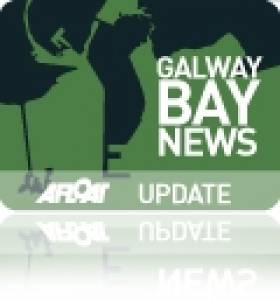Displaying items by tag: Naval Service flagship
#EithneMigrants - Naval Service flagship LÉ Eithne (P31) conducted a second successful rescue operation in the Mediterranean this morning involving 300 migrants according to Minister for Defence, Mr. Simon Coveney, T.D.
The Minister commented "the continued efforts of the LÉ Eithne to make a real contribution to the migrant crisis in the Mediterranean is commendable, this second rescue coming immediately after handing over rescued migrants from yesterday's operation reflects the commitment and professionalism of the Ship's crew.
This latest incident occurred 45 kilometres North of Libya in the early hours of this morning. The migrants were on board a barge that was attempting to cross the South Central Mediterranean. The migrants include men, women and children.
The LÉ Eithne handed over 201 rescuees from yesterday's rescue operation over to HMS Bulwark (L15) the Royal Navy's flagship as previously reported on Afloat.ie.
The second migrant rescue role was received from the Italian Marine Rescue Co-ordination Centre. The LÉ Eithne deployed immediately to assist and arrived on scene at 4 am.
The Minister has confirmed that "All 300 migrants from the barge were successfully taken on board the LÉ Eithne and the ship is currently awaiting further instruction from the Italian Marine Rescue Co-Ordination Centre"
Galwegian Special Olympian Athletes Celebrate On board Navy's Flagship
The world games which were held during June and July saw over 7,500 athletes from 185 countries participate in the Greek capital. Team Ireland in total brought home 107 medals, with athletes from Galway securing 11 medals and a number of ribbons in a variety of sports.
Speaking about the reception, Regional Director Myra Merrick said: "We are honoured to have the Naval Service docking in Galway especially for the function. The athletes deserve a warm reception and recognition for their wonderful success. It's a huge achievement in itself to participate at World Games level, let alone bring back a medal".
"The event presents an exceptional opportunity for the public to extend congratulations to our local sporting heroes, explore the Defence Forces vessel and meet the officers" she added.
The 1984 built /1,910 tonnes 'helicopter patrol vessel' and her seven fleetmates are all each assigned to a particular charity. In the case of L.E. Eithne she is associated with Our Lady's for Sick Children, Crumlin in Dublin.






























































